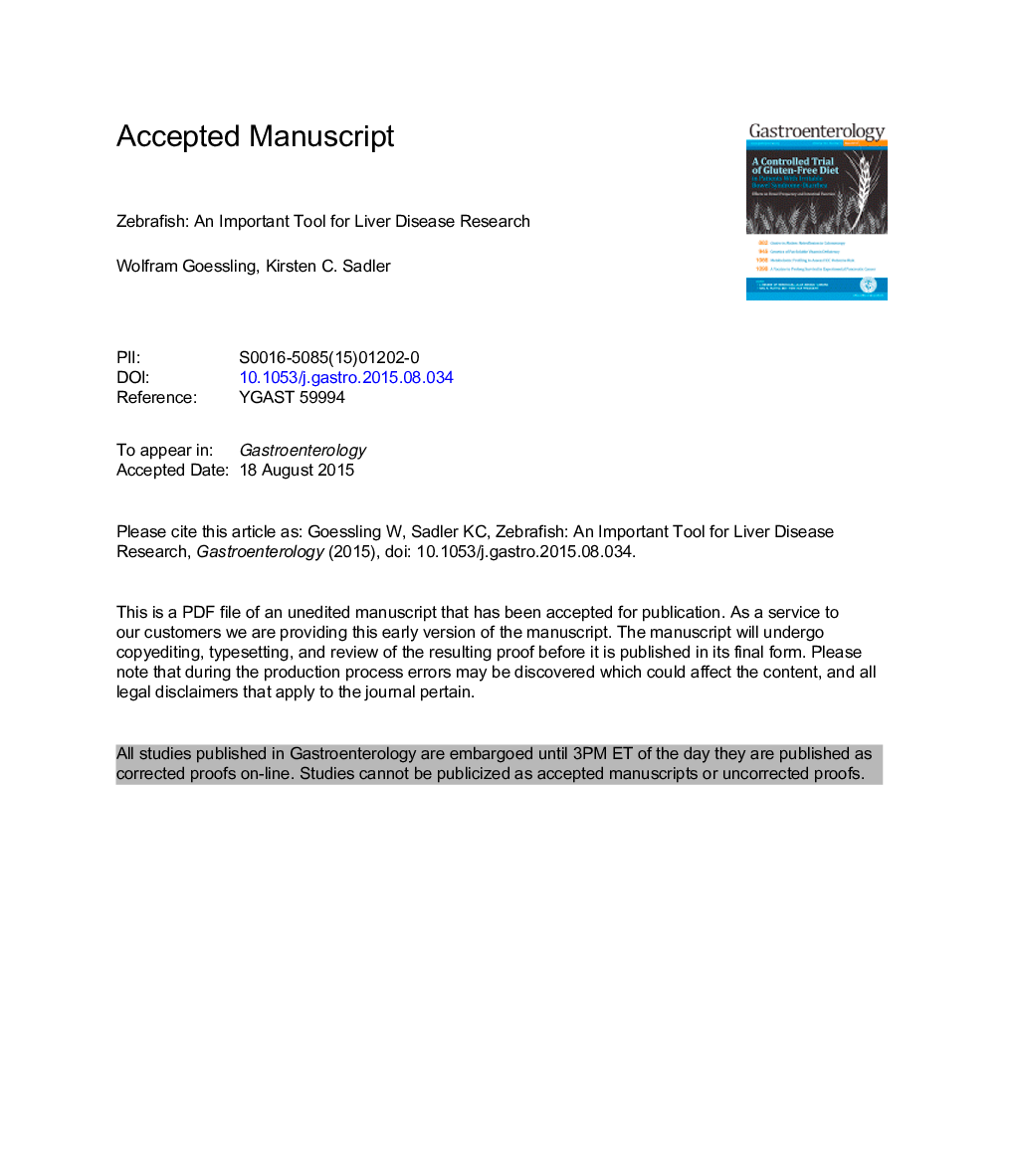| Article ID | Journal | Published Year | Pages | File Type |
|---|---|---|---|---|
| 6092330 | Gastroenterology | 2015 | 47 Pages |
Abstract
As the incidence of hepatobiliary diseases increases, we must improve our understanding of the molecular, cellular, and physiological factors that contribute to the pathogenesis of liver disease. Animal models help us identify disease mechanisms that might be targeted therapeutically. Zebrafish (Danio rerio) have traditionally been used to study embryonic development but are also important to the study of liver disease. Zebrafish embryos develop rapidly; all of their digestive organs are mature in larvae by 5 days of age. At this stage, they can develop hepatobiliary diseases caused by developmental defects or toxin- or ethanol-induced injury and manifest premalignant changes within weeks. Zebrafish are similar to humans in hepatic cellular composition, function, signaling, and response to injury as well as the cellular processes that mediate liver diseases. Genes are highly conserved between humans and zebrafish, making them a useful system to study the basic mechanisms of liver disease. We can perform genetic screens to identify novel genes involved in specific disease processes and chemical screens to identify pathways and compounds that act on specific processes. We review how studies of zebrafish have advanced our understanding of inherited and acquired liver diseases as well as liver cancer and regeneration.
Keywords
GFPdimethylbenzanthraceneFLDUPRDMBANACCyPDPFHCCN-acetylcysteineROSALDDrug-induced liver injuryRegenerationalcoholic liver diseaseFatty liver diseaseDILIDevelopmentdays postfertilizationLiver cancerToxicologyCytochrome P450endoplasmic reticulumTechnologyUnfolded protein responsegreen fluorescent proteinHepatocellular carcinomaReactive oxygen species
Related Topics
Health Sciences
Medicine and Dentistry
Gastroenterology
Authors
Wolfram Goessling, Kirsten C. Sadler,
